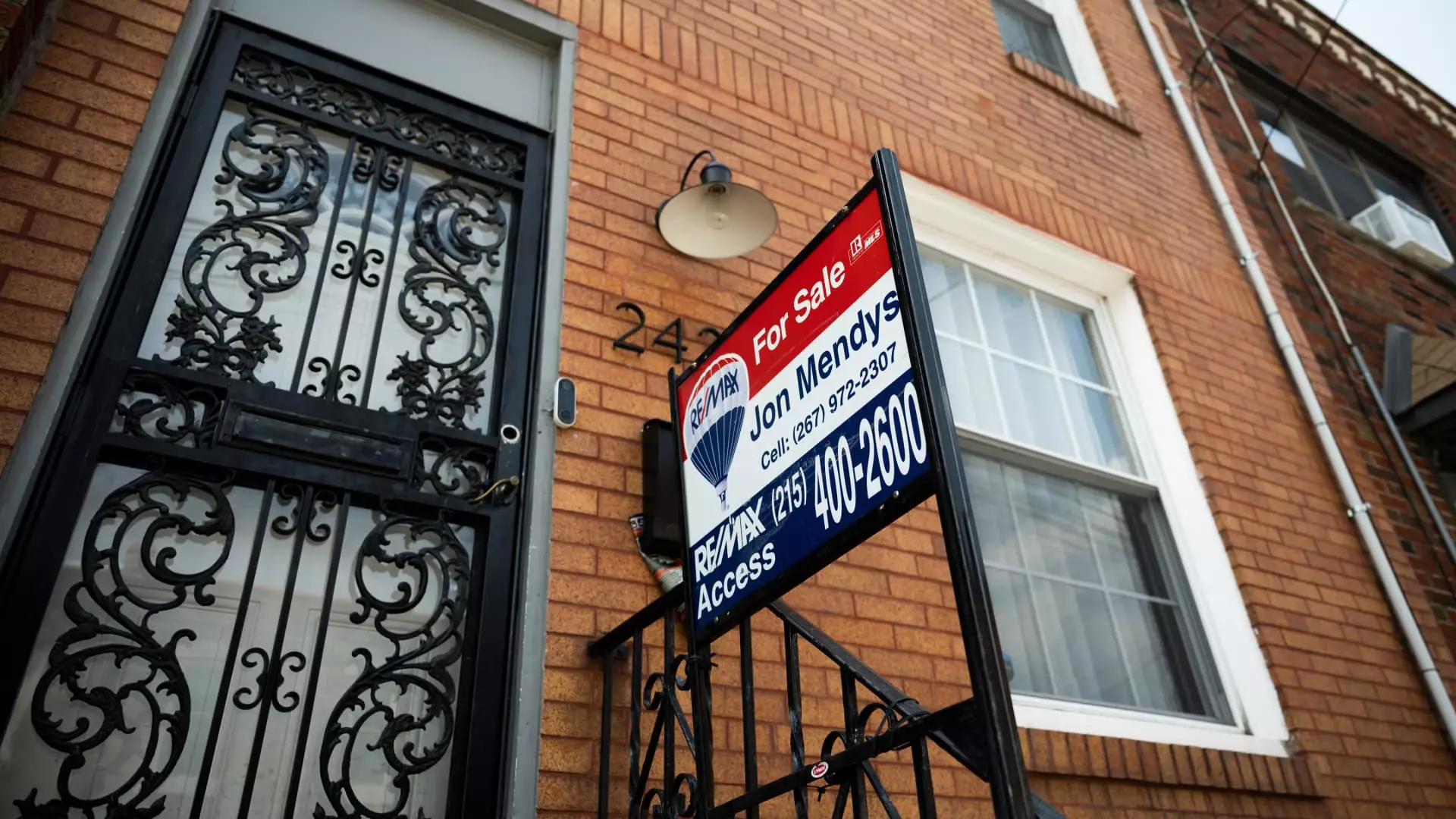The U.S. housing market is currently navigating a period of significant turbulence, characterized by factors affecting both prospective homebuyers and sellers. As mortgage rates remain stubbornly high, prices continue to escalate, and the inventory of available homes remains constrained, the environment for real estate transactions is becoming increasingly difficult. This article will explore the nuances of the current housing market, highlighting trends, challenges, and potential ramifications for various stakeholders involved.
Recent data from the National Association of Realtors (NAR) presents a sobering view of the housing market. In January, existing home sales dipped by 4.9% month-over-month, plunging to an annualized rate of 4.08 million units. This figure was notably lower than analysts’ expectations, who had predicted a decrease of only 2.6%. Although sales saw a slight uptick of 2% compared to January 2024, they remain perilously close to a 15-year low, indicating a significant erosion in buyer activity. The trend can be traced back to a rise in mortgage rates, which surged from 7% to a more modest 6% range in late 2023.
The role of mortgage rates cannot be understated; they serve as a critical determinant of housing affordability. Lawrence Yun, the chief economist at NAR, pointed out the inertia in mortgage rates despite efforts by the Federal Reserve to implement interest rate cuts. This stagnation, coupled with inflated home prices, creates a substantial barrier for potential buyers, rendering homeownership an elusive dream for many.
Inventory levels have been a focal point of market discussions, as they have shown a modest increase. By the end of January, the number of homes on the market rose to 1.18 million, marking a 3.5% increase from December and a 17% leap from January 2024. Despite this uptick, the overall supply remains strikingly low, equivalent to only a 3.5-month inventory at current sales levels. A stable market is generally recognized as one with a six-month supply, indicating a precarious balance between buyers and sellers.
The implications of this constrained inventory are multifold. Increased listings do provide opportunities for buyers with solid financial qualifications to enter the market, yet this is contingent upon lowering mortgage rates as well. The prolonged duration that homes are residing on the market—averaging 41 days in January—suggests that buyers are hesitant, likely due to affordability challenges and uncertain economic conditions.
One of the most alarming trends emerging from the current housing market is the relentless rise in home prices. The median selling price in January reached an all-time high of $396,900, reflecting a 4.8% increase from the previous year. Notably, this upward trend persists across all four U.S. regions tracked by the NAR, with approximately 15% of homes selling above their listing price—indicative of sustained buyer competition even amidst broader market weakness.
Interestingly, the market is exhibiting divergent performance based on price segments. Homes priced below $250,000 are witnessing declining sales—down 1.2% year-over-year—while luxury homes priced over $1 million are experiencing a remarkable growth of nearly 27%. Such segmentation highlights the growing disparity in market activity, making it more challenging for entry-level buyers, who constitute a mere 28% of sales—well below the historical norm of around 40%.
The U.S. housing market is ensnared in a complex conundrum defined by high prices, elevated mortgage rates, and limited inventory. The present conditions are yielding a double challenge for both prospective buyers and sellers. Despite newfound inventory levels, which ordinarily would stimulate activity, the significant synergy required between easing mortgage rates and affordability persists as the primary impediment to revival in the market. As realtors report weak buyer traffic, it is evident that a comprehensive approach encompassing market reforms and strategic financial relief is necessary for re-energizing this pivotal sector of the economy. For now, the dream of homeownership might remain just that—an aspiration—while the market waits for more favorable conditions to materialize.


Leave a Reply